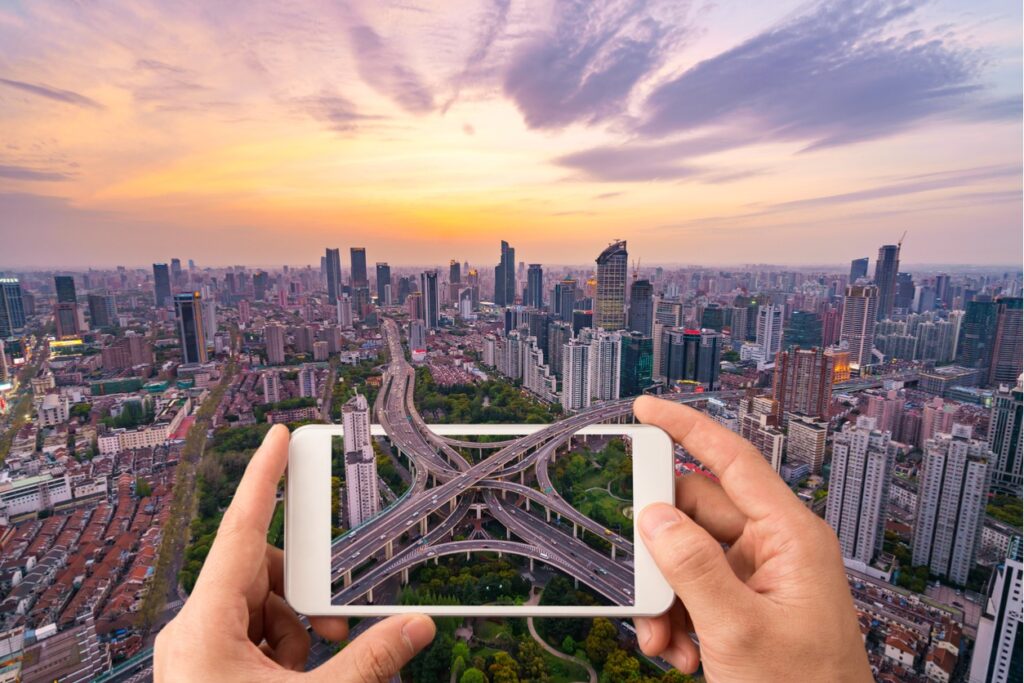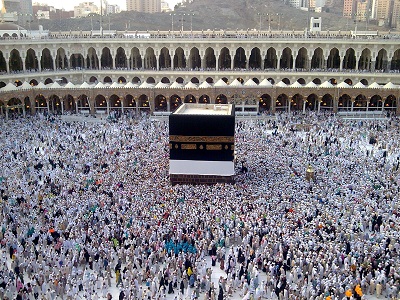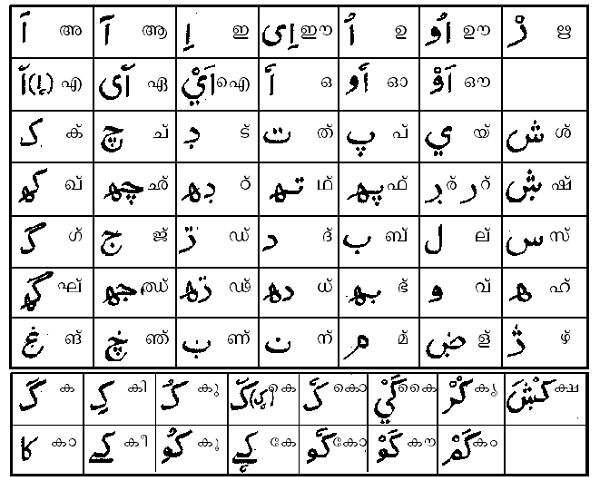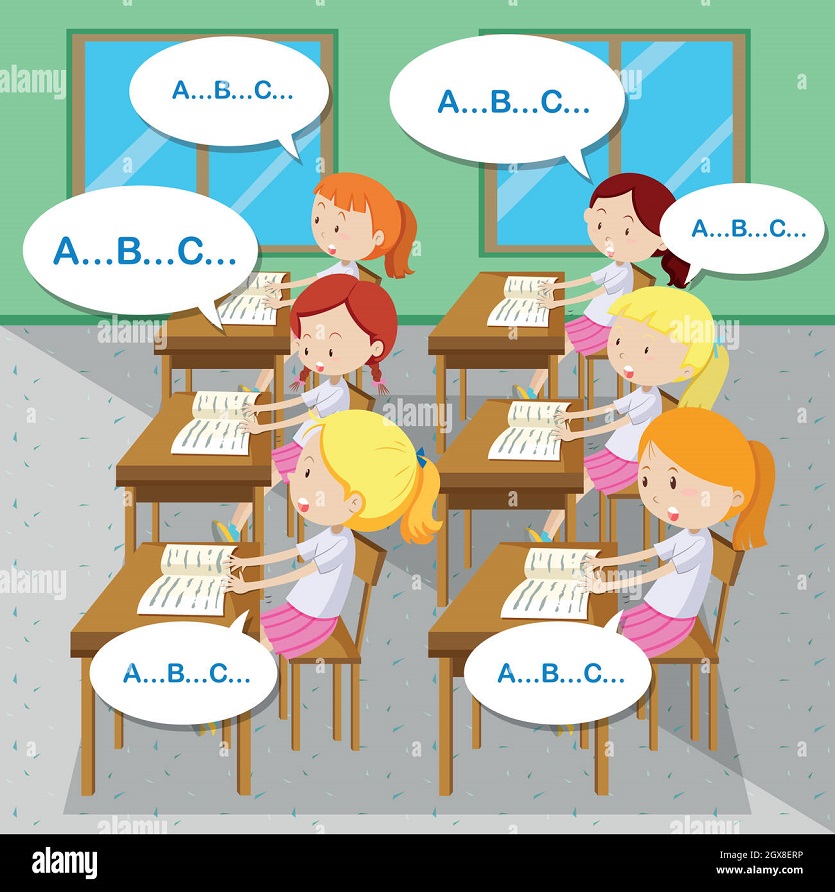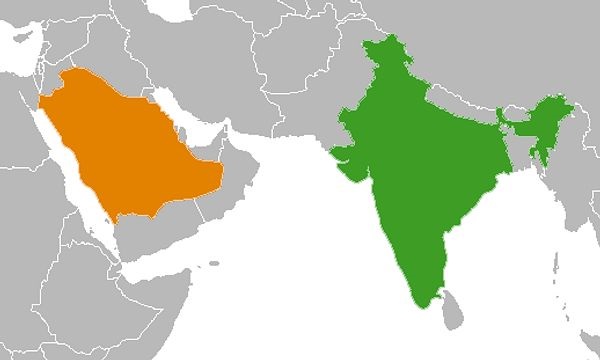Virtual Tourism: A Study on possibilities of Virtual tourism and its effect during covid-19 pandemic
Mohammed Yaseen T T
Assistant Professor of Commerce, KTM College of Advanced Studies, Karuvarakundu, Kerala India
Abstract
The covid-19 (declared as a pandemic by WHO,12 March 2020 ) has significantly impacted the global economics, political, socio-cultural system, health, community strategies and measures (eg. social distancing, travel and mobility bans, community lockdown, stay-at-home campaign, self or mandatory quarantine, curbs on crowding)It has also affected andaltered global travel tourism and leisure. The tourism industry was the one of the world's greatest markets; until the world met the pandemic in the 21st century, covid-19. Tourism seems to be one of the most affected activities by the covid-19. Virtual tour is a simulation of an existing location, usually composed of a sequence of videos or still images. It may also use other multimedia elements such as sound effects, music, narration, and text. It is distinguished from the use of live television to affect tele-tourism. Most of the people are not aware about virtual tourism and its scope.
Key words: covid-19 pandemic, virtual tourism
Introduction
Travel restrictions in several countries to control the spread of coronavirus have cut export revenue from international tourism by US$730 billion. That’s more than eight times the loss experienced on the back of the 2009 global economic and financial crisis.
The United Nations World Tourism Organization (UNWTO) reported international tourist arrivals declined by 79% in August compared to the same period in 2019. This is about 700 million fewer arrivals. Countries all around the world have used virtual tourism to help offset this downward trend. Virtual tourism is a way to maintain tourists’ interest in a destination during the pandemic. It can also generate some income for the industry, such as for tour guides and souvenir shops.Singapore’s Tourism Board has co-operated with sites such as TourHQ andAirbob’s Online Experiences
The tourism economy has been one of the worst-hit industries by the COVID-19 outbreak. Depending on the duration of the crisis, data indicates that the potential shock could range between 60-80% declines in the international tourism economy in 2020.
To combat the decline in the sector, researchers are suggesting proposed technology such as LAPO, or Live Streaming with Actual Proportionality of Objects. LAPO employs both information geometry, the measures of an object’s curvatures, angles and area, and conformal mapping, which uses the measures of angles between the curves of an object and accounts for the distance between objects, to make images of people, places and things seem more real.
Literature review
★Katerinakabassi,AlessiaAmelio and KnostantionOikonomou (2019) paper presents the correct steps that have to be followed in order toimplement such an experiment and run an example experiment for virtualtours of Italian museums. The case study is conducted in Italy. Virtual reality (VR) technology offers an ideal presentation medium for museums and other cultural heritage institutions. Virtual museums’ lack of usabilityis commonly attributed to non-comprehensible or too complicated navigation techniques being used. For implementation of an evaluation experiment that uses a combination of two multi-criteria decision makingtheories AHP and TOPSIS. Searching for virtual tours of museums in Italy revealed that only a few museums that have a website also have a virtual tour. Also, searching on the webpage for the link from which thevirtual tour can be accessed is sometimes a problem due to poor design of the webpage. The main problems identified in their evaluation of the virtual tours of the museums in Italy had to do with the implementationissues of the VR interaction, namely the navigation functionality, the interactivity of the represented space and exhibits, and the information communication methods.
★Timothy Jung,NatashaMoorhouse,M.Cloudia Tom Dieck,DarioTom
Dieck (2017) conducted a study about to explore tourists experience on VR (virtual reality). Conduct an experimental survey at Lake District in UK. The study included 35 participants (14 male, 21 female, age range: 12-58).semi structured interviews were conduct to explore tourists’ experience of the application. Interview questions inquired about the themes of usability, requirements, involvement, experienced realism, impression and future usage intentions. Overall this study found that tourists welcome the opportunity to experience destinations virtually in order to get a better understanding of destination’s offerings. The findings reveal the potential of using VR in the tourism industry in order to engage tourists and enhance their behavioral intentions to visit destinations. This study’s findings confirm the acceptance of VR and positive effects on the travel decision making process.
★LP Voronkova (2018) conducted a study about Virtual Tourism: on the Way to Digital Economy, an article presented to examine tourism computerization process. The goal of the present study is to identify the direction of virtual tourism formation and its impact on the development of tourism as a digital economic industry.The analysis helped to establish that in international tourism the computerization has started to develop in three primary directions: the creation of global booking and reservation networks, the advent of electronic marketing and management and the design of virtual guided tours. The data is collected from articles and journals.Developing virtual reality technologies is becoming instrumental in addressing the many challenges of modern tourism. Virtual tours in marketing and management proved to be a promising tool to organize and manage tourism industry.
★David Mirk and Helmut Hlavacs (2014) evaluate the usability of flyingdrones in tourism. A live video feed is streamed live from a drone to atourist at some distance, wearing only a VR visor, and steering the dronewith head movements.This examines develop a system that allows a user from anywhere on the world to control a drone via internet where the direct control of the direction of the quadrocopter is exclusively managed by the server application and only the alignment of the front camera is assumed by the user.However for a practicable use of the Virtual Tourist in tourism, new quadrocopter model has to be chosen,which fulfills more of the given requirements.
★RimanteHopeniene,GintaRailiene and EgleKazlauskiene (2009) tried to identify the appearance opportunities of virtual tourism business. Reviewing, evaluation and systematic analysis of scientific literature; in depth interviews; synthesis of findings are the research methodologies used in their article. Various sides of business system and explanation of virtual organizing features of business system are discussed very well. This study focuses on the evaluation of relationship among the tour operators and travel agencies as collaborators and competitors to identify a tourism business system organization form. According to the empirical research, the virtual organizing of tourism business system members appears, but it is not sufficient for distinguishing the features of virtual business system. Data is collected by means of telephone survey. Survey is conducted in Lithuania. Virtual tourism business system formation is useful to co-produce the tourism products which increase the competitiveness of tourism destinations.
Statement of problem
In covid-19 situation tourism industry has been shut down in many part of the world. The young travelers have been badly affectedby the continuous lockdown etc. There is wide scope in tourism, visiting tourism webpages, and using virtual reality all are the innovative technologies in tourism. Tourists can discover the world from their home virtually, by using this. The present study state that impact of virtual tourism and its effect during covid-19 pandemic.
Objectives of this study
• To investigate the level of awareness of youth on virtual tourism.
• To analyze the attitude of youth towards virtual tourism.
• To study what is virtual reality in tourism.
•To study effectiveness of virtual tour.
Importance of this study
The tourism industry is one of the world's greatest markets. In the modern world there are various innovative technologies in tourism. Tourism industry is important for the benefits it brings and due to its role as a commercial activity that creates demand and growth for many more industries. Tourism not only contributes towards more economic activities but also generates more employment, revenues and plays a significant role in development. If new generation accepting virtual tourism, they can save money and time and also get new experience while travelling. If a study conducted about virtual tour and attitude of youths towards this we can understand future of virtual tourism.
Scope of the study
This study helps to understand the awareness and perception of youths on Virtual tourism. It is absolutely a source of feedback from young travelers and virtual tourists. The growth of tourism industry is depends on youth and increasing technology create a chance to virtual tourism and virtual reality. New generation would like to spend times while using social media. So with the help of social media they can travel virtually and get virtual experience. This study helps analyze the futureand scopes of virtual tourism.
VIRTUAL TOURISM
Virtual tour is a simulation of an existing location, usually composed of asequence of videos or still images. It may also use other multimedia elements such as sound effects, music, narration, and text. It is distinguished from the use of live television to affect tele-tourism.The phrase "virtual tour" is often used to describe a variety of videos and photographic-based media. A video tour is a full motion video of a location. Unlike the virtual tour's static wrap-around feel, a video tour is a linear walk-through of allocation.
HISTORY OF VIRTUAL TOURISM
The origin of the term ‘virtual tour’ dates back to the year 1994. One of the first users of a virtual tour was Queen Elizabeth II, who officially opened the visitor center for Dudley Castle in England. Designed by Colin Johnson, this system became an early prototype of a virtual tour. The term ‘virtual tour’ was an amalgamation of ‘virtual reality’ and ‘royal tour’. This early virtual tour was an interpretive tour for museum visitors, comprised of a ‘walk-through’ of a 3D reconstruction of Dudley Castle in England, as it was in the year 1550. The system was in continuous use from 1994 to2005.
VIRTUAL TOURISM IN INDIA
Virtual reality (VR) technology-driven experiments are transforming the travel industry. Taking this into account, Ministry of Tourism, Government of India has partnered with Outside VR, a travel tech startup, to empower people to travel India virtually and further boost Incredible India campaigns. Outside VR is an experiential platform that allows you to virtually travel across popular heritage sites, historical monuments and tourist attractions using a smartphone, desktop, or VR headset. This tie-up between the Ministry of Tourism and Outside VR is in line with Prime Minister NarendraModi’s vision of Atmanirbhar Bharat (self-reliant India).
Here, one can explore interesting places in the country right from the ancient Key Monastery, Himachal Pradesh in the north to the picturesque Kannur Light House, Kerala in the south. You can also stroll the streets of the West for handicraft and traditional culture and finally venture all the adventures of India’s beautiful northeast. The latest place, available for virtual exploration on the platform, is home to Jaipur’s royal family as well as a museum – City Palace, Jaipur, Rajasthan.
VIRTUAL TOURISM IN KERALA
A joint initiative by the Embassy of India and India Tourism, these VR experiences would be available at the Incredible India (India Tourism), and Kerala Tourism stalls as well. This is a chance to view Indian tourist attractions in virtual reality for the uninitiated travellers. The VR facilities will let the visitors view immersive 360-degree videos and in turn experience some of the most popular tourist attractions in the country, including QutubMinar, Amer Palace, Khajuraho, Nalanda, Kailashnath Temple, Athirappilly Waterfalls, Alappuzha Backwaters, and various other cultural and natural landmarks inIndia.
Both the India Tourism and Kerala Tourism stalls, along with their respective VR experiences would be inaugurated by VenuRajamony, Ambassador of India to The Netherlands, and Jan van Zanen, Mayor of Utrecht. In order to ensure that the visitors get a complete feel of what India has to offer to the travellers, also available would be Indian refreshments that showcase the cultural richness of the country in the best possible manner.
VIRTUAL REALITY
Virtual Reality (VR) is the use of computer technology to create a simulated environment. Unlike traditional user interfaces, VR places the user inside an experience. Instead of viewing a screen in front of them, users are immersed and able to interact with 3D worlds. By simulating as many senses as possible, such as vision, hearing, touch, even smell, the computer is transformed into a gatekeeper to this artificial world. The only limits to near-real VR experiences are the availability of content and cheap computing power.
VIRTUAL REALITY IN TOURISM MARKETING
Virtual Reality (VR) is the use of computer technology to create a simulated environment. Unlike traditional user interfaces, VR places the user inside an experience. Instead of viewing a screen in front of them, users are immersed and able to interact with 3D worlds. By simulating as many senses as possible, such as vision, hearing, touch, even smell, the computer is transformed into a gatekeeper to this artificial world. The only limits to near-real VR experiences are the availability of content and cheap computing power. Virtual reality marketing involves brands promoting themselves and their products using virtual and augmented reality technology. The technology creates a fake but realistic environment. Sometimes VR marketing is visual, and sometimes it's multi-sensory.
TYPES OF VIRTUAL TOURISM
Virtual tourism comes in many different shapes and sizes. Some forms of virtual tourism require little more than a computer or a smart device, whereas others have a complex setup of technologies. There are five main types of virtual tourism, outlined below.
Try before youbuy
In its early form virtual tourism focused around the concept of marketing. Virtual reality and virtual experience software allows potentially customers to ‘try before they buy’. This form of marketing has been proven to be very successful, thus many tourism-based organizations have actively pursued and developed forms of VR marketing.
Visit real places without leaving
Google earth has really been a game-changer in the realms of virtual tourism. Google Earth allows you to explore areas throughout the world at the touch of a button. Whether you want to take a look at the street down the road of see the Pyramids of Giza, almost every part of the world is now documented by the Google camera.
One of the great technological feats of virtual tourism is the ability to recreate destinations or attractions from the past. Using current images alongside computer generation projections, developers are able to design software which allows tourists to experience types of tourism that are no longer available. Some programmes allow users to toggle the time and transport themselves to any time or place that they wish.
Visit areas that are inaccessible
There are many parts of the world that are off-limits. This could be because we cannot afford to travel there, because they are in remote locations or because the area is closed off entirely to visitors. However, with the advent of virtual tourism, there is no part of the world that is inaccessible any longer.
Visit areas that do not exist
The final type of virtual tourism and one that is yet to really take off- it is the ability to visit areas that do not actually exist.
TYPES OF VIRTUAL TOUR
360° Virtual Tour
A 360° virtual tour enables your web visitors to view everything within a physical location in 360° radius. Imagine you are staying in the middle of the room and looking at it. That is exactly what your visitors will experience having360 ° virtual tours online via the website. Furthermore, 360° virtual tourfeatures a ground plan and hot spots allowing tour visitors to interact directly with the scene. The real and interactive elements are the factors that make 360° virtual tours so compelling.
3D Virtual Tour
Enjoy the exhibits of the virtual tour and relax in the atmosphere of pure art and beauty in real time. With 3D Tour, you can have it all on your PC.3D tour enables your web visitors to dip into the atmosphere of the institution, to walk through the rooms (exhibits) and to choose pleasing exhibits simply clicking on them either online via the website or offline using CD-ROM application. The 3D format is visually more attractive and realistic than pictures or panoramas because it allows seeing objects from different angles.
3D Animation 3D animation is a good interactive way to show the objects in three-dimensional form on the screen making 3D content readily available for users. Usually, 3D animation is used in 3D tutorials, interactive visualization of objects, 3D training and 3D games.
Conclusion
The researchers suggest the virtual tourism technology could help mediate some of the COVID-19 pandemic’s impact on the tourism industry and offer other advantages. Benefits from this technology include cost-effectiveness because virtual tourism would be cheaper; health safety, because it can be done from the comfort of home; time saving, eliminating travel times; it’s accessibility. The technology would also make tourism safer and more secure, eliminating risks like becoming a victim of crime while travelling; and it requires no special equipment, a standard home computer with a graphics card and internet access is all that’s needed to enjoy a “virtual trip.”
Reference
1. Reality Technology Overview for Tourism App Development”
2. .Lin Hui*, Fu-Yi Hung, Yu-Ling Chien,” Mobile Virtual Reality of Tourism-Yilan Hot Spring”.
3. Cintya de la Nube Aguirre Brito,” virtual Reality applied in Tourism Mobile Applications”.
4. Jung, M. Claudia tom Dieck, Natasha Moorhouse and Dario tom Dieck, “Tourists’ Experience of Virtual Reality Applications,” 2017 IEEE International Conference on Consumer Electronics (ICCE).
5. Wang Chunli, “Application of Virtual Reality Technology in Digital Tourism,” 2011 Third International Conference on Multimedia Information Networking and Security
6. L. Shu, “For Marriott, the future of travel is a virtual realityteleported phone booth,” Digital Trends, Retrieved on 07/09/2016 via: http://www.digitaltrends.com/photography/marriottoculus-rift-virtualreal-world-application/
7. L. Graham, “Virtual reality devices could transform the tourism experience,” CNBC, Retrieved on 07/09/2016 via: http://www.cnbc.com/2016/01/08/virtual-reality-devicescouldtransform-the-tourism-experience.html
8. Addison, A. C. (2000). Emerging trends in virtual heritage. IEEE Multimedia, 7(2),22–25.
9. , A. C. (2007). The vanishing virtual: safeguarding heritage’s endangereddigital record. In Y. E. Kalay, T. Kvan, & J. Affleck (Eds.), New heritage: New media and cultural heritage (pp. 27–39). New York: Routledge.
10. , K. (2002). Visualization tools and methods in community planning: from freehand sketches to virtual reality. Journal of Planning Literature, 17(2),
